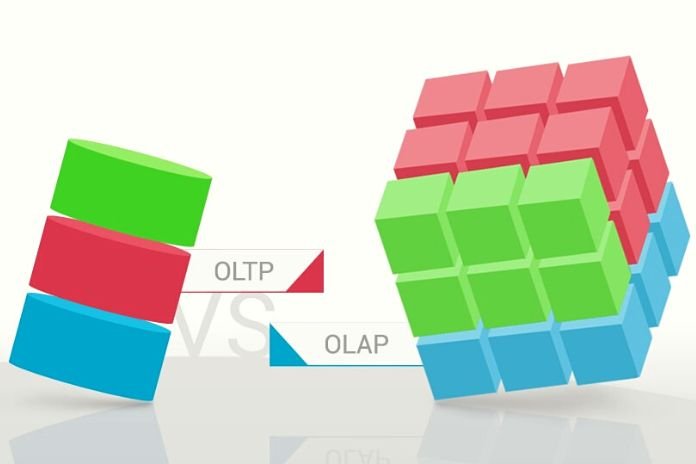
Digital transformation has led companies to be increasingly data-driven, orienting their processes and decisions in the perspective of operations and analyzing the quantity and variety of increasingly essential data. It is now decidedly complex to find a business area whose activity does not depend on having to continuously process and manage digital data from various sources and stored in management systems such as databases, data lakes, data warehouses, and many others. Suppose data is the raw material, the fundamental value, and the primary source of wealth of digital companies.
In that case, a successful business must be able to extract the most significant possible information potential from the data itself. Therefore, the focus shifts to data processing, a discipline with specific systems such as OLAP (online analytical processing) and OLTP (online transaction processing). The functionalities and differences between OLAP and OLTP are easily understood from the description of the respective acronyms, which see the former oriented to analysis for the production of insights and the latter specifically designed to deal with data transactions at an operational level. Let’s try to understand in detail what OLAP and OLTP are and the criteria according to which it is now possible to evaluate their implementation in the business environment.
OLAP
OLAP stands for online analytical processing, which we could localize as online analytical processing. It is a data processing system whose purpose is to carry out multidimensional analysis on large amounts of data at very high speed, to return valuable insights to inform and make business decisions more aware. In other words, OLAP is a business analytics tool that operates between the data management system (e.g., data warehouse) and data visualization software, which make insights with information available to stakeholders—processed from raw data.
Among the figures involved, we find the C-Levels, decision-makers at various organizational levels, and data analysts. The ability to support business decisions means that OLAPs are also used to analyze a wide variety of trends in real-time to understand whether the set objectives are being achieved or not, consciously guiding the choices in the future. OLAP systems are used for data mining and even very complex analyses, such as those required in finance, budgeting, and sales forecasts, regardless of the application sector.
OLTP
OLTP is online transaction processing, which can be translated as online transaction processing. These are applications specifically designed to support financial transactions, CRMs, ERPs, and many vertical operations, including those related to retail, particularly regarding marketing and sales procedures. OLTP is also particularly popular in non-financial transactions, such as the password change operations of online authentication systems.
In the context of a transaction, OLTP systems deal specifically with what SQL language experts know as: “insert, update, delete,” that is, to record the insertion, updating, and deletion of data, with a streamlined and decidedly modern logic in its technological conception. OLTP is, therefore, a process aimed at guaranteeing the correct operation of transactions and sees IT managers and database specialists as its primary stakeholders. OLTP uses relational databases, sharing at least the following characteristics:
- 24/7 operation with very high availability tiers to ensure no downtime
- Incremental backup support
- Processing large numbers of simple transactions such as inserting, updating, and deleting data
- Data integrity to provide access to many users simultaneously
- The real-time operation, supported by fast operations, performed in the order of milliseconds
- Data indexing is available for searches and queries made by analysis systems and other IT tools
The Differences
OLAP is a data processing system used to collect and analyze data, while OLTP is a data processing system that aims to manage online transactions at an operational level. Based on these simple definitions, it is possible to identify the main differences between these two technologies, starting with operations. OLAP is designed to carry out long, complex, and less frequent (near real-time) transactions compared to OLTP, which is based on opposed operational assumptions, with a strong focus on real-time processing. From a computing point of view, OLAP is much slower than OLTP but requires storage that can accommodate a large amount of data. OLTP, operating on transactions in real-time, must instead be extremely fast, with workloads consisting of read and write operations via SQL in the simplest way possible.
OLAP prefers a type of highly aggregated data, while OLTP, working directly on ongoing transactions, is designed to process data of a disaggregated nature. At the technological level, an OLAP database enjoys a multidimensional schema that can support complex queries of current data and historical data. Different OLTP databases can be aggregated as data for the analysis carried out by OLAP systems, for example, thanks to a data warehouse. The differences between the two data processing systems also emerge from their application context. Data scientists and business analytics specialists use OLAP to conduct in-depth analysis and research on data derived from the business. In contrast, OLTP, being oriented to process transactions, is used to support various front-ends in the retail sector, in ATM systems, online banking, e-commerce, and logistics, for example, in online booking systems.
Which One To Choose
The answer to this question can only be: why should you choose? OLAP and OLTP are data processing systems that are incredibly different from each other, both at a functional and operational level, to satisfy profoundly distinct needs. As already specified, an OLTP can prepare the database that an OLAP needs to carry out its analyzes, creating a digital continuity along the entire process, which can, for example, range from a single transaction to the analysis of sales data in time. Accurate and helpful in improving the efficiency of the entire process cycle that goes from the concept to the marketing of a product. All this is possible thanks to the more informed decisions that stakeholders can regularly make through the insights generated by an OLAP.
Also Read: CRM: Why Is It So Important For Companies?



